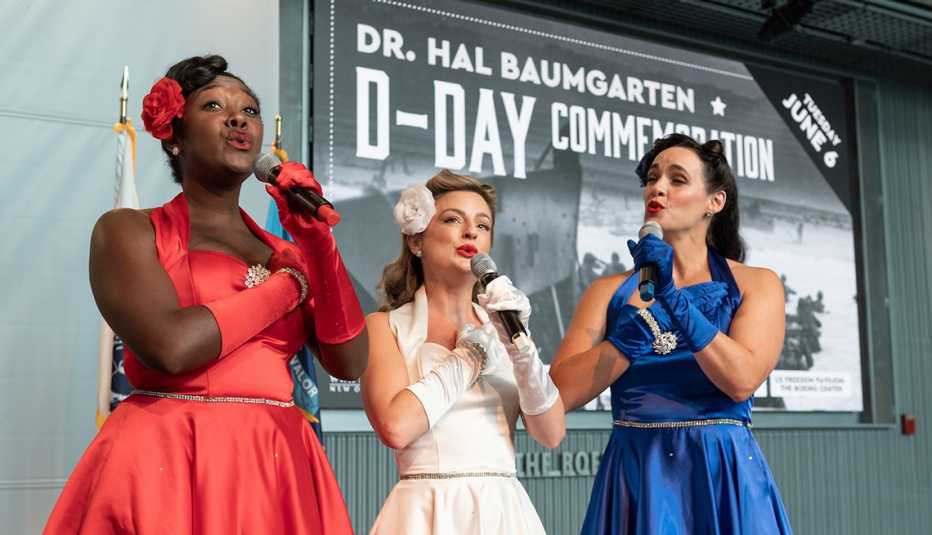Staying Fit


When the Victory Belles vocal trio take to the stage, the audience is transported back eight decades. The country is still reeling from Pearl Harbor, Nazi Germany occupies much of Europe and the morale of GIs is a national priority for the United States.
With their period outfits, old-style glamor and harmonies that evoke the era of boogie-woogie and swing, the Victory Belles — heiresses of the Andrews Sisters — reflect a time of national crisis but also unity, patriotism and wholesomeness. Since being founded in 2009, the troupe has been a particular favorite of the sadly fast-dwindling band of World War II veterans.


AARP Membership— $12 for your first year when you sign up for Automatic Renewal
Get instant access to members-only products and hundreds of discounts, a free second membership, and a subscription to AARP the Magazine.
“They call us a living exhibit here at the National World War II Museum,” Hannah Rachal, a Belle for the past decade, told AARP Experience Counts. Her grandfather served in the U.S. Marines in World War II. “We really try to look like we walked out of the 1940s and stay as true to the era as possible.”
The Belles started with three artists but now draw from a pool of 11. They do extensive research to recreate hairstyles, makeup and costumes, turning to black-and-white movies and photos for inspiration.
“The Victory Belles were originally created as the first Wednesday matinee,” said Mandi Mueller, one of the three founding Belles. “We signed a three-month contract and expected to close the show at some point.
“Shortly after we opened our original show, it was clear that the Belles could and would be used for much more than just another entertainment production at the canteen.”


You can subscribe here to AARP Experience Counts, a free e-newsletter published twice a month. If you have feedback or a story idea then please contact us here.
“The Belles were created to bring that music of the 1940s back to life and pay tribute to the performers of the time and ‘the boys’ they were performing for. Now, we have traveled across the globe performing for veterans and active-duty military.”
Rachal said: “I’ll go and try and find old patterns from the 1940s. Once a pattern is decided upon, they find the right fabric and pass everything on to a costumer to create the final look.”
The selection process is rigorous. “We sing, we dance, and we also have an interview and give a little speech,” said Rachal. The ability to interact with veterans and other guests is key. “It’s so important that we’re able to make connections, especially when we’re with veterans,” said Rachal. “We want them to feel special and important.
“Being a Belle isn’t just a performing gig, it’s more than that. There’s a lot of weight to it — you might end up talking to a veteran about their experience when they were serving and they might end up telling you a really beautiful story, and you’re not going to want to rush that experience.”

































































More From AARP Experience Counts
MY HERO: What My Father Left Unsaid About World War II
Howard Mansfield's father never talked about his war experience. But why?Life Lessons From Former Green Beret Mike Vickers
He has been at the forefront of protecting America for the past five decadesWWII Diary Reveals Iwo Jima Battle
A sailor on board the USS Arkansas left a remarkable historical recordRecommended for You